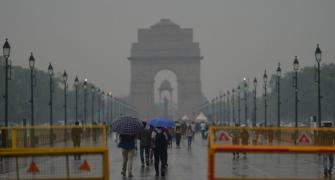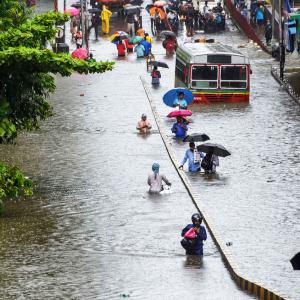India is predicted to record above-normal rainfall in August and September, with a good chance of favourable La Nina conditions developing by the end of August, the India meteorological department said on Thursday.

Prediction of above-normal rain means there's a high possibility of landslides and floods.
The monsoon is critical for India's agricultural landscape, with 52 percent of the net cultivated area relying on it.
The primary rain-bearing system is also crucial for replenishing reservoirs critical for drinking water and power generation across the country.
The IMD said that rainfall over India in August and September would be around 106 percent of the long-period average of 422.8 mm.
The country has so far recorded 453.8 mm of rainfall against the normal of 445.8 mm since June 1, a surplus of two percent, owing to a wetter-than-normal July after a drier June.
Normal to above-normal rainfall is predicted in most parts of the country in August-September. Below-normal rainfall is expected in parts of the northeast, adjoining east India, Ladakh, Saurashtra and Kutch, and pockets of central and peninsular India, IMD chief Mrutyunjay Mohapatra said during an online press conference.
The IMD chief anticipated deficient rainfall in parts of western Himalayan region in August-September.
La Nina, a buildup of cooler-than-normal waters in the central Pacific Ocean aiding monsoon rainfall in the Indian subcontinent, could set in by August end, he said.
Mohapatra said above-normal maximum temperatures are expected over most parts of the country.
"Normal to below-normal maximum temperatures are likely in some areas in the Gangetic plains, central India, and the southeast coast of India."
India recorded nine percent more rainfall than normal in July, with the central region receiving 33 percent excess rain.
Mohapatra said that central India, which heavily relies on monsoon rainfall for agriculture, has been receiving good rainfall for the third consecutive monsoon season, benefiting agriculture.
East and northeast India recorded a rainfall deficit of 23 percent and northwest India 14 percent. The southern peninsula received 36 percent more rainfall in July.
IMD data showed significant rainfall deficits in east Uttar Pradesh, Bihar, Jharkhand, Gangetic West Bengal, and parts of the northeast. However, good rainfall is expected in the region in August and September.
According to IMD data, the rainfall deficit in Haryana, Punjab, Himachal Pradesh, and Jammu and Kashmir ranged from 35 percent to 45 percent.
Mohapatra said central and southern India got surplus rain as the monsoon trough remained south of its normal position on most days.
The Indian monsoon is characterised by inherent fluctuations and changes that occur over time due to various natural factors. This is called natural variability.
However, research shows climate change is making the monsoon more variable. Increased variability means more extreme weather and dry spells.








